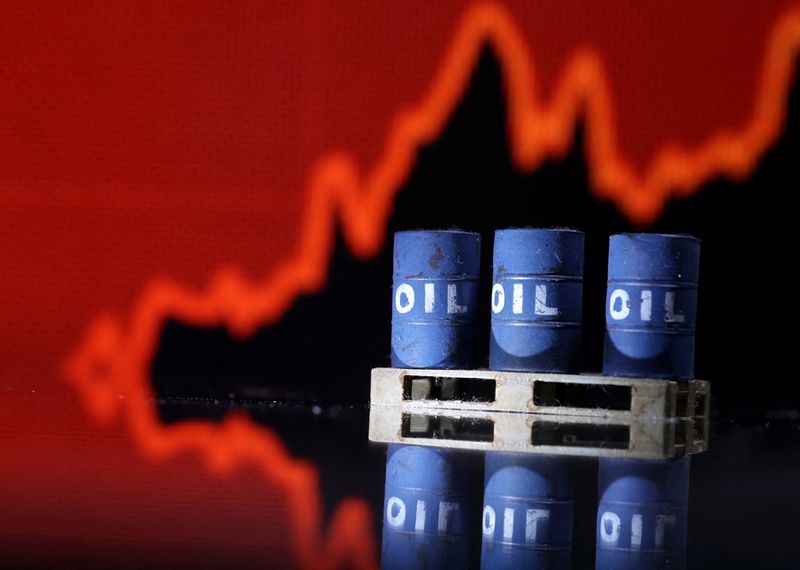Oil rises as Russian gas cut to Europe may encourage switching to crude
2022.07.26 04:54

Model of Oil barrels are seen in front of rising stock graph in this illustration, July 24, 2022. REUTERS/Dado Ruvic/Illustration
By Yuka Obayashi
TOKYO (Reuters) – Oil rose on Monday on expectations Russia’s reduction in natural gas supply to Europe could encourage a switch to crude, though concerns over weakening fuel demand because of an expected increase in U.S. interest rates limited gains.
Brent crude futures for September settlement climbed 45 cents, or 0.4%, to $105.60 a barrel by 0112 GMT, following a 1.9% gain in the previous day.
U.S. West Texas Intermediate (WTI) crude futures for September delivery increased 34 cents, or 0.4%, to $97.04 a barrel, having gained 2.1% on Monday.
Russia tightened its gas squeeze on Europe on Monday as Gazprom (MCX:GAZP) said supplies through the Nord Stream 1 pipeline to Germany would drop to just 20% of capacity.
Russia’s cut in supplies will leave countries unable to meet its goals to refill natural gas storage ahead of the winter demand period. Germany, Europe’s biggest economy, faces potentially rationing gas to industry to keep its citizens warm during the winter months.
“Higher gas prices, triggered by Russia’s gas squeeze, could lead to additional switching to crude from gas and support oil prices,” said Hiroyuki Kikukawa, general manager of research at Nissan (OTC:NSANY) Securities.
“But a tug-of-war between concerns about weakening demand due to the economic slowdown amid rising U.S. interest rates and fears of supply risk because of prolonged Russia-Ukraine conflict will likely to continue for some time,” he said, predicting WTI to remain in a trading range centred on $100 a barrel.
The U.S. central bank is widely expected to raise interest rates by 75 basis points at the conclusion of its policy meeting on Wednesday. A hike of that magnitude would effectively close out pandemic-era support for the economy.
The gap between Brent and WTI has widened to levels not seen since June 2019 as easing gasoline demand in the United States weighs on U.S. crude while tight supply supports the international Brent benchmark.








